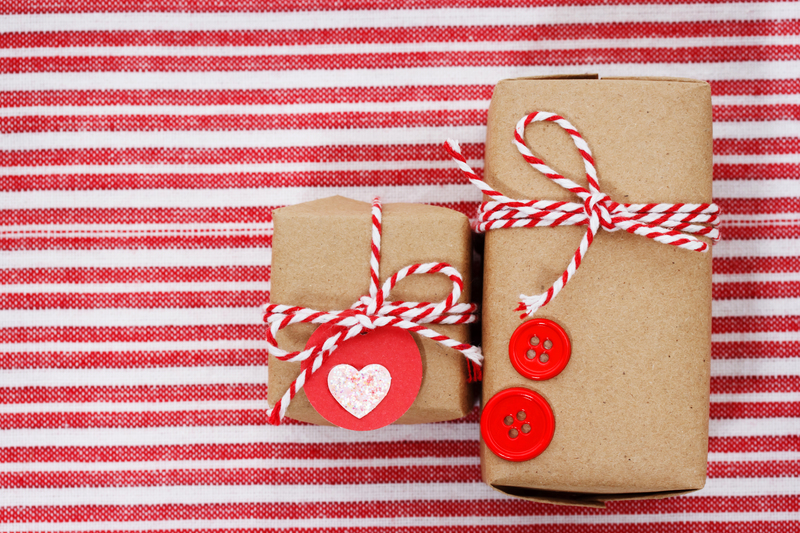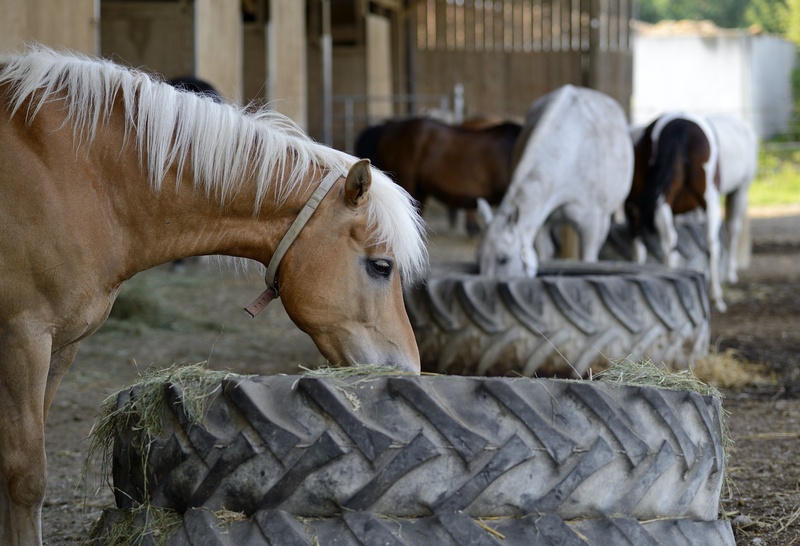Eco-Friendly Tips for Recycling Your Used Cookware: A Comprehensive Guide
Upgrading to nonstick pans or discovering that your trusty old cast iron has passed its prime is inevitable in every kitchen. But what happens next? Rather than tossing old pots and pans into the landfill, you can make sustainable choices for the environment and even benefit your community. Here are comprehensive, actionable eco-friendly tips for recycling your used cookware.
Why Should You Recycle Old Cookware?
With millions of tons of household waste generated every year, recycling your used cookware plays a pivotal role in reducing your carbon footprint and conserving precious resources. Items like pots, pans, and baking trays are typically made from metals or materials that can be reused in manufacturing new products. Whether it's stainless steel, aluminum, copper, or ceramic, responsible disposal prevents harmful materials from leaching into the environment--and gives your cookware a productive second life.
Key Environmental Benefits of Recycling Cookware
- Reduction in Landfill Waste: Keeping old cookware out of the dump reduces the volume of landfill and slows the need for new disposal sites.
- Resource Conservation: Recycling metals saves natural resources, like ores, and requires less energy than extracting new materials.
- Less Pollution: Manufacturing from recycled metals emits fewer greenhouse gases and toxins than processing raw materials.

Understanding the Types of Cookware and Their Recycling Options
Not all cookware is created equal. To determine the best way to recycle your used items, it's critical to distinguish between the types of materials:
- Stainless Steel Cookware
- Aluminum Pots & Pans
- Copper Cookware
- Cast Iron Skillets
- Nonstick & Teflon-coated Pans
- Glass or Ceramic Bakeware
Note: Some types, especially nonstick and coated pans, need to be handled with extra care to recycle responsibly.
12 Eco-Friendly Ways to Recycle Used Cookware
1. Take Advantage of Local Scrap Metal Recycling
Most metal cookware--like aluminum, steel, copper, and cast iron--can be recycled as scrap metal. Check with your municipality or local recycling center to see if they accept cookware. Remove all plastic handles, rubber parts, or glass lids, as these usually need to be separated.
- Clean thoroughly and remove any non-metal pieces.
- Call ahead about drop-off protocols.
- If your center doesn't accept certain pieces, ask for advice on the closest facility that does.
2. Upcycle or Repurpose Around the Home
Transform old pans and pots into unique household items. Examples include:
- Planters: Drill drainage holes and paint for a quirky garden display.
- Organizers: Shallow baking trays can become drawer dividers or office organizers.
- Wall Art: Get creative--old colanders, lids, or metal pans become stunning rustic wall decor.
These projects are a *creative* way to give cookware a new function in your home.
3. Donate Gently Used Cookware to Charity
If your pans and pots are still safe to use, consider donating them. Many charities, thrift shops, shelters, and community kitchens will gladly accept lightly used cookware. Ensure items are clean and free of hazardous coatings.
4. Offer Stuff for Free on Online Marketplaces
Neighborhood groups, Freecycle, Facebook Marketplace, and Craigslist allow you to give away old cookware for free--avoiding waste and helping others in your local area.
5. Participate in Manufacturer Take-Back Programs
Some brands offer take-back or recycling initiatives. Companies such as Calphalon, GreenPan, and others may provide incentives for returning your worn-out Teflon-coated pans or other products so they are disposed of responsibly.
- Check the manufacturer's website for details.
- Mail-in or drop-off options may exist.
6. Contact Specialty Recycling Services
For complex items (e.g. nonstick coatings, composite materials), search for recycling companies like TerraCycle which accept hard-to-recycle household items, including certain kitchenware.
7. Recycle Glass and Ceramic Bakeware Responsibly
Most curbside programs don't accept glass or ceramic bakeware due to their high melting points. However, some recycling centers and transfer stations offer drop-off options. Alternatively, local art schools, community centers, or mosaic artists may repurpose broken ceramic pieces in their work.
8. Organize a Community Swap
Gather neighbors or friends for a kitchenware swap. Someone may find value in what you no longer need, keeping cookware in action and out of the landfill.
9. Compost Wooden or Bamboo Handles
Many pots feature wooden or bamboo handles. Detach these pieces and compost them (if untreated or unpainted), ensuring every part of your cookware is dealt with sustainably.
10. Recycle with Household Hazardous Waste Events
Some communities organize special recycling drives to collect metal or coated cookware. Check for household hazardous waste days or events at your local recycling center.
11. Get Creative in the Garden or Workshop
- Tool Organizer: Turn deep pots into caddies for gardening or garage tools.
- Bird Bath: Use large metal pans on a sturdy base as wildlife water stations.
- Feeders or Water Dishes: Old bowls are perfect for feeding pets or livestock.
12. Support Zero Waste Initiatives
Research local zero waste shops or recycling collectives that may take hard-to-recycle items and give them a second life in an eco-conscious way.
Dealing with Nonstick, Teflon, and Coated Pans
Nonstick cookware is popular but requires careful disposal due to its chemical coatings. Here's what you need to know:
- *Most curbside recycling programs cannot process Teflon or PTFE coatings.*
- Contact the manufacturer to see if they have a recycling program.
- If no take-back options exist, separate the coatings (if possible) and recycle the metal, or take the full pan to a specialty metals recycler and disclose the material types.
*Never incinerate nonstick cookware*, as this releases toxic fumes.
Preparing Cookware for Recycling
Follow These Steps for Optimal Recycling:
- Clean thoroughly: Remove food residues, oils, or stains.
- Separate components: Detach plastic, silicone, rubber, or wooden parts as instructed by your recycler.
- Remove non-recyclable coatings: If possible, scrape off nonstick surfaces (note: some centers will do this; ask first).
- Sort by material: Place metals together, glass with glass, and exclude anything your facility can't process.
Common Cookware Recycling FAQs
- Can I recycle pans with burned or scratched coatings?
Slightly scratched pans may be accepted at metal recyclers, but burned nonstick coatings often require special handling. When in doubt, contact your recycler for guidance. - Are cast iron pans recyclable?
Absolutely. Cast iron is highly recyclable and valuable as scrap metal. Alternatively, restore and reuse if rust is the only issue! - Can I put old cookware in my curbside recycling bin?
Rarely. Most roadside programs don't accept cookware, except for small metal household items in certain areas. Check your facility's guidelines. - What about glass lids?
Toughened glass is different from bottles and jars, so consult your recycling center before adding it to glass recycling streams.

Extra Eco-Friendly Tips for a Zero Waste Kitchen
- Purchase High-Quality, Long-Lasting Cookware: Buy once, buy quality! Durable pieces reduce waste over time and are easier to repair or refurbish.
- Choose Easily Recyclable Materials: Opt for cookware made from pure metals (cast iron, stainless steel, aluminum) without coatings.
- Avoid Excessive Coatings: Uncoated cookware is more environmentally friendly and poses fewer recycling challenges.
- Take Care of Your Cookware: Routine seasoning, avoiding metal utensils, and hand washing prolong the lifespan of your kitchen investments.
Troubleshooting: When Recycling Options Are Limited
Some regions have few metal recycling options, or curbside programs may not accommodate large cookware. In this case:
- Search Earth911 or RecycleNation for specific local recycling points by entering the item and your zip code.
- Ask at local hardware, kitchen supply, or thrift shops if they accept or redistribute used cookware.
- Contact scrap yards directly, even if not listed as 'kitchen recyclers.' Many accept household metals.
If all else fails, get creative: turn old pots into buckets, storage bins, or kids' sand toys.
Summary: Every Pan Counts!
Implementing eco-friendly cookware recycling is a simple yet impactful habit for the planet. By separating materials, contacting local facilities, and exploring donation or upcycling opportunities, you can extend the lifecycle of your kitchen essentials and keep waste out of landfills. Start with your next decluttering session, and transform the way you think about "throwing away" used cookware.
Remember: every conscious action helps build a greener, cleaner future. Happy cookware recycling!
```